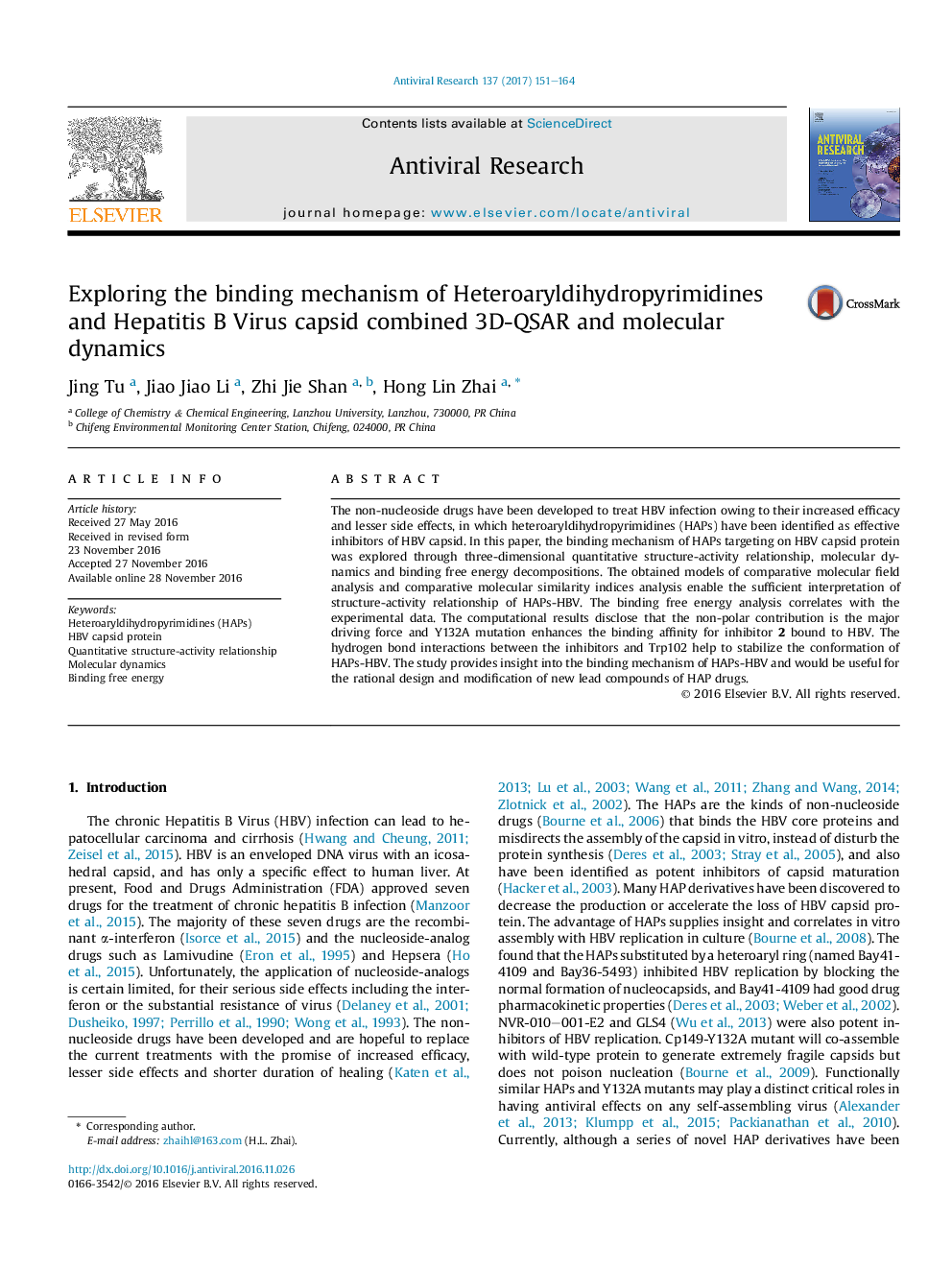| کد مقاله | کد نشریه | سال انتشار | مقاله انگلیسی | نسخه تمام متن |
|---|---|---|---|---|
| 5551915 | 1557806 | 2017 | 14 صفحه PDF | دانلود رایگان |

- The interactions between HAPs and HBV capsid were explored by molecular simulation.
- CoMFA and CoMSIA models were established to predict the favorable features of HAPs.
- The non-polar contribution is primarily leading force in active pocket.
- Y132A mutation increases the binding free energy for inhibitor 2 bound to HBV.
- The H-bond interactions of Tyr102 are help to stabilize the conformation of HAPs-HBV.
The non-nucleoside drugs have been developed to treat HBV infection owing to their increased efficacy and lesser side effects, in which heteroaryldihydropyrimidines (HAPs) have been identified as effective inhibitors of HBV capsid. In this paper, the binding mechanism of HAPs targeting on HBV capsid protein was explored through three-dimensional quantitative structure-activity relationship, molecular dynamics and binding free energy decompositions. The obtained models of comparative molecular field analysis and comparative molecular similarity indices analysis enable the sufficient interpretation of structure-activity relationship of HAPs-HBV. The binding free energy analysis correlates with the experimental data. The computational results disclose that the non-polar contribution is the major driving force and Y132A mutation enhances the binding affinity for inhibitor 2 bound to HBV. The hydrogen bond interactions between the inhibitors and Trp102 help to stabilize the conformation of HAPs-HBV. The study provides insight into the binding mechanism of HAPs-HBV and would be useful for the rational design and modification of new lead compounds of HAP drugs.
The binding mechanism between HAPs and HBV capsid protein was proposed based on molecular simulation including 3D-QSAR and molecular dynamics simulations. Our results would provide helpful guides to design new drugs.316
Journal: Antiviral Research - Volume 137, January 2017, Pages 151-164